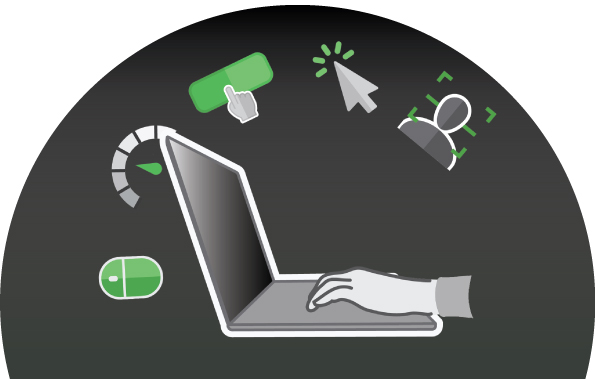
Using Behavioral Data And Analysis To Enhance Fraud Detection
The old line “keep your friends close and your enemies closer” is one every business executive should keep in mind. Getting to know your customers is good business. Getting to know the techniques of fraudsters is just as important.
Thanks to the pandemic, fraud rose dramatically in recent years. How dramatically? The FTC received 2.2 million fraud reports from consumers in 2020. Online shopping was the second-highest fraud category reported with a huge surge in the beginning months of the pandemic. Fraud not only hurts consumers, it also has a huge impact on business revenue. The dramatic shift to more and more transactions occurring digitally has impacted most large organizations.
Managing risk in the digital space takes more than asking for a username and password plus a two-factor authorization code in an online portal. Companies need accurate data to know which consumers are genuine and which are fraudulent to mitigate the risk of loss. The solution? A new source of insightful information that is additive to the current fraud stack.
Behavioral Data Enhances The Fraud Risk Assessment Process
Behavioral data can be used to stop fraudsters from opening fraudulent accounts, taking over existing accounts, and more. By checking in real time for chunking data entry patterns, automated activity, irregular cursor movements and swipes, jailbroken devices, and hundreds of other signals, NeuroID can reliably tell whether a person entering the information is a user who is familiar with their data or someone engaging in nefarious activity.
The use of behavioral data in real-time gives a clear path by which to act.
When analyzing gaps in visibility that fraudsters can exploit, organizations should use an Integrated Risk Management (IRM) approach. IRMs are a fraud risk assessment process that helps companies to mitigate risk.
Think of them as practices and processes that lead to the best possible decisions when it comes to the fight against fraud.
There are 6 steps to an IRM approach:
- Strategy: Create a strategy to provide a roadmap for how you’ll implement your new tactics. Enable every level of your organization to implement risk avoidance techniques.
- Assessment: Once you’ve found every risk area, put them into a hierarchy of importance and tackle the most essential first.
- Response: Describe how you will implement your risk mitigation techniques.
- Communication and Reporting: Give updates on the status of your risk reduction process to your employees and stakeholders to calm fears and protect the brand.
- Monitoring: Constantly check the effectiveness of your techniques, ensuring compliance with the strategy and maximizing accountability.
- Technology: Have all of the pieces and parts you need to reduce the risk for your organization, whether they include hardware, software, or services.
Look for unintended consequences, too. As you’re implementing new processes to eliminate risk, there can be growing pains for your organization. It’s important to look for solutions that will integrate easily with your existing risk management systems.
Properly designed real-time fraud detection solutions won’t cause such issues. Get expert support as you’re setting up your new fraud reduction approach to minimize this friction.
Balancing Fraud Prevention Techniques
Like we’ve talked about before, being able to tell the difference between genuine customers and nefarious actors is essential for your business.
Behavioral analytics can tell by the manner in which information is entered whether the person at the keyboard is who they claim to be, a fraudster, or not a human at all (a bot).
By adding this additional source of customer insight, organizations are able to see more than just historic data about the user. They get a current state of mind, they get real-time insights into intentions and emotions. This can add a tremendous amount of incremental value when assessing whether the user is a frustrated customer or a fraudulent actor.
Mitigating Risk For A Better Customer Experience
As businesses seek to protect their customers and themselves from fraudulent behavior, they have to strike a balance between the usability of their interface and gatekeeping fraud.
Most people have had the experience of trying to log into an account and having to identify images to prove they aren’t robots. They might have to provide PII, answer personal questions, put in passwords, or put in a third-party-generated code, only to get frustrated when they get locked out of an account for a period of time after mistyping a single letter.
To smooth out the user experience, behavioral analytics can do a better job of allowing appropriate users to access tools and technologies without giving scammers easier entry, too.
How Behavioral Analytics Can Support Risk And Fraud Management
Behavioral analytics examines legitimate users’ actions to determine predictable patterns. Using behavioral data to determine how legitimate users act when they interact with your site can help your company identify when scammers are trying to get through.
Instead of requiring methods like biometrics and other invasive measures, detecting fraud with a behavioral data analytics platform like NeuroID provides a powerful, API-delivered means of leveraging actionable insight. For extra security, our fraud analytics products work in tandem with existing fraud and risk management systems.
Protecting Your Company With Behavioral Analytics
Mitigate risk with fraud analytics that can help ensure you don’t lump legitimate users in with the scammers.
NeuroID works in real-time to analyze user behavior, allowing businesses to effectively stop fraud without adding friction for genuine customers. Schedule a demo today to learn how behavioral analytics can enhance your current fraud management systems.




